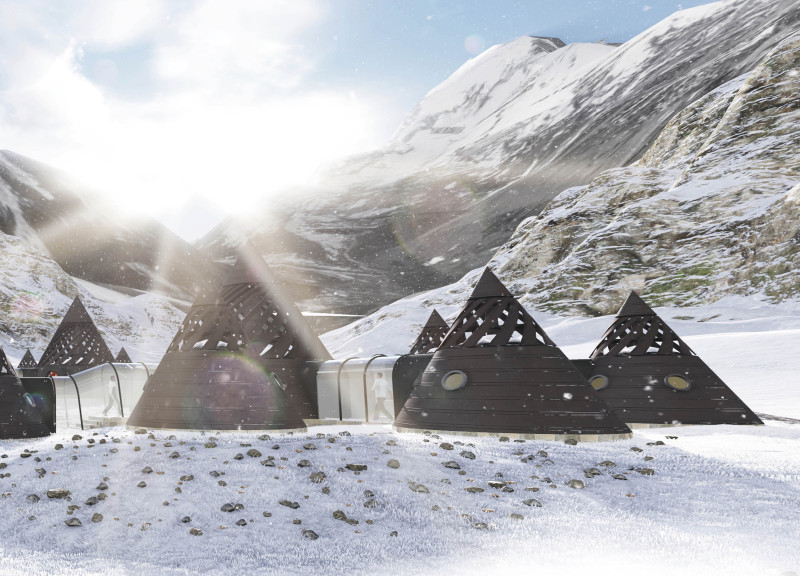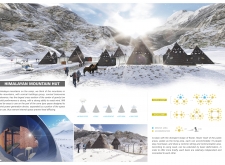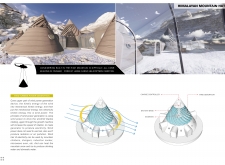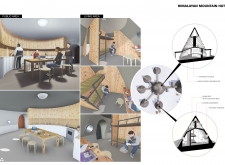5 key facts about this project
At its core, the project represents a vision of connectivity and harmony with its surroundings. The design is not merely about constructing a physical structure; it is about creating a vibrant environment where various activities can unfold seamlessly. This is achieved through the careful arrangement of spaces that prioritize user experience while remaining sensitive to the landscape and urban fabric. The architectural language employed throughout the project conveys a sense of openness and invites exploration, enhancing the connections between indoor and outdoor environments.
Functionally, the building encompasses a range of spaces, including communal gathering areas, recreational facilities, and private workspaces, each tailored to encourage both collaboration and solitude. The layout has been meticulously planned to facilitate movement and interaction, with pathways and gathering spaces that naturally guide visitors throughout the environment. This thoughtful organization supports the project's aim to bolster community ties and create a sense of belonging among users.
The materials selected for this architectural design play a crucial role in defining its character. A blend of sustainable materials such as locally sourced timber, high-performance glass, and durable concrete not only ensures structural integrity but also enhances energy efficiency and environmental sustainability. The choice of materials has been driven by their ecological footprint and the aesthetic qualities they impart, allowing the building to resonate with its natural surroundings. Each material has been specifically chosen for its performance characteristics and aesthetic attributes, contributing to both the functionality of the space and the overall visual harmony.
One of the defining elements of the design is the facade, characterized by a rhythmic interplay of solid and voids. Large windows framed in warm timber allow natural light to flood the interior while providing unobstructed views of the exterior landscape, effectively blurring the lines between indoor and outdoor spaces. This approach reflects a commitment to transparency and community engagement, inviting passersby to connect with the building's activities. The patterning and materiality of the facade also create a visually appealing rhythm that enhances the architectural silhouette without overwhelming the surrounding context.
The interior spaces of the project have been designed with user comfort and practicality in mind. Flexible spaces that can adapt to various activities ensure that the building remains relevant to the changing needs of the community. These areas are infused with natural light and can be easily configured for different purposes, fostering creativity and collaboration. Additionally, the incorporation of green spaces and biophilic design elements enhances the overall atmosphere, promoting well-being and encouraging users to engage with nature.
Unique design approaches, such as the integration of energy-efficient systems and smart technology, are also noteworthy features of the project. These elements contribute to a sustainable future while ensuring that the building operates efficiently and effectively. The design anticipates the needs of the community and adapts to future challenges, presenting a model for contemporary architecture that blends sustainability with user-focused design.
For those interested in delving deeper into this architectural endeavor, exploring the architectural plans, sections, and detailed designs will provide further insights into the thoughtful decision-making behind the project. Each element has been carefully crafted to ensure a cohesive response to the environment while fulfilling its intended purpose. Engaging with the full presentation will enhance understanding of the project’s nuances and the innovative design ideas that drive it forward. This project exemplifies a holistic approach to architecture, urging us to reconsider how spaces can foster community interactions and enhance the quality of life for their users.


























